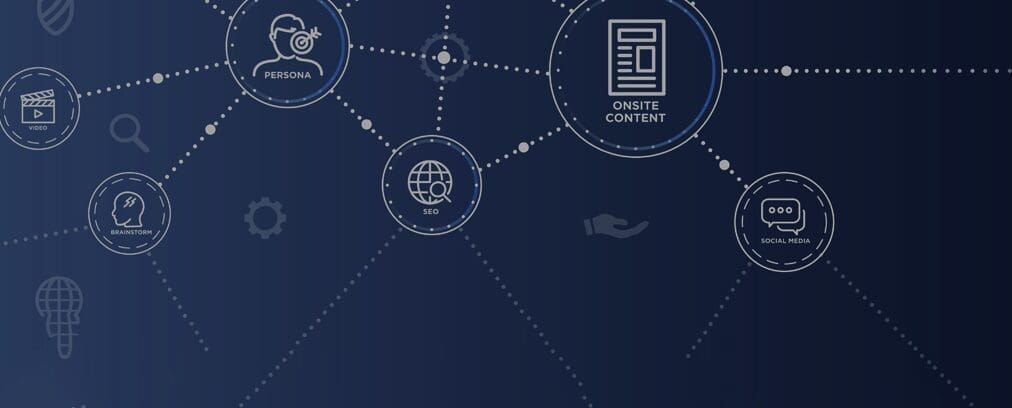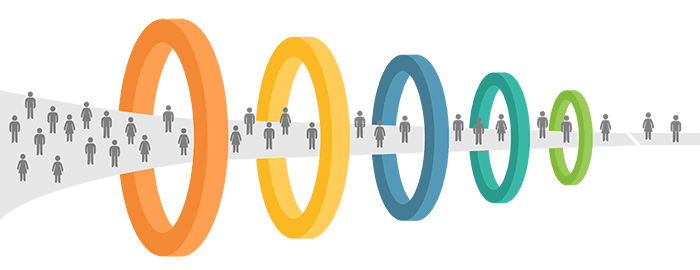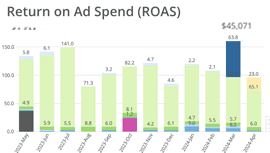Deconstructing Marketing Attribution

The Customer and the Marketing Mix
Whether a business sells consumer furniture or industrial equipment, the customer journey and effective marketing mix can be lengthy, complex, and opaque to the marketer attempting to calculate discrete ROAS.
A customer may read reviews on social media, click an advertisement, visit a business website, watch a video, download a white paper, or search for a brand name. A customer can spend weeks (or months) researching before adding a product to cart or filling out a sales contact form.
This buying process, even for a seemingly straightforward product like a new couch, can span multiple channels and campaigns, making it a challenge to accurately track and understand the role and return on investment (ROI) of each channel, much less each ad or landing page.

Read more:
- The Challenge of Accurate Attribution
- Demystifying Attribution
- Tracking and Collecting Data
- Conversion Analysis
- Application for ROAS
The Challenge of Accurate Attribution
“My CRM and Web Analytics already do attribution!”
Marketers use attribution modeling to tackle these questions. However, many popular tools are often least effective for full-funnel cross-channel attribution. The most common solutions are either point solutions or “add-on” solutions that deliver partial attribution.
Point solutions focus on single channels like mobile apps, phone calls or specific ad channels. They provide internal attribution within a channel such as Facebook, Google Ads, or phone calls. Point solutions cannot effectively attribute revenue across channels, leaving the business with limited or misleading results.
Other solutions are effectively “add-on” utilities to larger systems with entirely different purposes. For example, a company CRM or basic web analytics platform may include attribution features. However, these solutions are not designed to deliver comprehensive attribution for revenue across the marketing mix.
While brands continue to spend vast amounts on MarTech, measurement is often considered an afterthought. Over 70% of organizations underinvest in measurement, and fewer than 10% of CXOs can accurately forecast ROMI from changes in spends.
While partial attribution solutions are ineffective, marketers are susceptible to automation bias, believing some information is better than none at all. However, this limited attribution cannot provide a clear holistic view of the efficacy of marketing elements in driving revenue.
The result is partial, siloed, and even biased data–not full-funnel cross-channel revenue attribution.
Demystifying Attribution
For marketers struggling to reach accurate, full-funnel, cross-channel revenue attribution, the marketing mix seems a complex mystery in which many key parts remain hidden. But it doesn’t have to be. A comprehensive solution for true revenue attribution requires three steps:
- Tracking and Collecting Data
- Conversion Analysis
- Application for ROAS
This post will describe these steps, their discrete parts, and the requirements that create unbiased attribution to drive performance.
To remain competitive, businesses need a marketing attribution solution that tracks and captures all customer touchpoints, makes conversion analysis accessible, and delivers information that can be immediately applied to increase revenue and efficiencies.
True attribution ties marketing to money, to revenue, so that brands can focus future resources on repeating what works, and discontinue investing in what does not.
1. Tracking and Collecting Data
Quark Tracking PixelTM and Cloud DB
The first element of a true attribution solution is the global tracking pixel. The tracking pixel captures all touchpoints across all channels, unifying the data in a way not possible with point or add-on attribution solutions. The global pixel should be easy to install, and not require retagging advertising links. Simply load the code snippet with Google Tag Manager (or a similar tag manager), and update tags globally.
Capture Complete Journeys
The tracking pixel captures all touch points, including those that influence or assist, mini-conversions, and revenue conversions. These captured touchpoints cover all channels, such as organic search, email marketing, paid media, referrals, and direct traffic.
Regardless of the structure of a key conversion, whether forms, pages, links, etc, the global pixel automatically learns and captures conversions across brand marketing elements.
Key metadata is also captured from sites and platforms, including paid click identifiers, time, campaign, ad set/creative, and keywords. Also captured are brand-specific variables from page transactions such as product line, item #s, etc.
Without a universal tracking pixel, marketers are left with multiple partial data sources (e.g., Google Analytics, Google Ads, Facebook, DSPs, etc.) and multiple conversion configurations. With a global tracking pixel, marketers can unify the data that currently resides in multiple disparate platforms with siloed (and biased) measurement systems.
Unbiased Independent Tracking
To ensure unbiased independent data capture, the tracking pixel functions effectively without relying on 3rd-party cookies or ad platform APIs. Privacy limits on third-party cookies continue to expand, making third-party cookies unreliable. Similarly, ad platform APIs limit brands to the data that ad platforms measure and choose to share. Such data can be biased and duplicative, skewing data and, as a result, marketing strategy and tactical implementation. Instead, an independent tracking pixel creates unbiased visibility of all marketing elements.
While conversions are captured in real time, asynchronous recording capability prevents overloading and slowing web performance and enables loading offline touchpoint data at any time. Finally, data is written to secure, redundant cloud architecture to unify data for conversion analysis.
2. Conversion Analysis
Configurable Dashboards, Reports, Platform Integration
The second key step to true attribution is conversion analysis. A configurable dashboard allows brands to easily analyze journey data and make informed decisions on their marketing mix. Marketers can use queries, sorts, and views to isolate high- and low-performing elements, and identify the best elements and combinations to accelerate revenue.
Configurable Dashboard
Full-funnel conversion analysis is made possible by data transformation within the dashboard. Using simple semantic-level queries, marketers can find the values for any marketing element or KPI dimension, predict future outcomes, and pinpoint key optimization opportunities.
Configurable dashboards should be able to:
- Transform/configure data views using specific attribution models
- Configure data views by dimensions and values.
- Aggregate and isolate by various dimensions and values
Individual and Aggregate Journey Detail
Dashboards should accommodate conversion analysis with visibility at the individual and aggregate level for all customer journeys. Unlike ad platforms or Google Analytics, where data is obscured or abstracted, a true attribution dashboard reveals per-user characteristics and attributes. The additional attribute metadata can be used to compare individual and aggregate journey paths by customer segment and other key characteristics.
Agnostic Modeling
The platform should be model agnostic, allowing businesses to use any attribution model, including rules-based models like linear and position-based, data-driven, or even AI-driven. Machine learning can identify the value-maximizing combinations of marketing elements to drive actual revenue.
Target Metrics
Because the system is independent and unbiased, brands can focus on metrics that matter. Unlike ad platforms that are designed to offer services toward external conversion metrics (CPM, CPC, CTR), true attribution analyzes revenue metrics. Instead of providing only directional measures on top-of-funnel KPIs, target metrics focus on the ability to generate revenue or LTV.
Unlimited Lookback Windows
Average B2B and many B2C sales cycles are longer than 5 months. As a result, lookback windows must be unlimited, and not restricted to the typical 90-day window of point solutions or web analytics platforms. This requirement ensures that early touchpoints and key traffic acquisition can be considered for journey optimization.
Analysis Results
With a holistic view of your marketing data and comprehensive attribution modeling across all channels, you can truly understand your ROI and make data-informed decisions on how to maximize it. This big-picture attribution intelligence is what most brands and agencies desire, and it’s achievable with the right platform and ability to connect all these pieces together.
For example, queries allow marketers to quickly calculate and visualize
- ROMI at channel, initiative, and creative levels
- Highest and lowest performing channels, paths, landing pages
- Content types and messages most often preceding conversions
- Successful marketing elements found at each key funnel stage
- Future return on specific modified marketing elements
Finally, in addition to native dashboard functionality, the platform should connect to other business visualization platforms and integrate to a CRM. Brands may wish to leverage other visualization tools used across the organization. Synchronization with the CRM completes customer records with specific user behavior history and enables sales and marketing access to attribution insights.

3. Application for ROAS
Reallocate, Optimize, and Architect
The final step is applying the comprehensive insights to manage all initiatives holistically across channels in order to drive revenue and efficiencies. Once value is attributed to each channel and touchpoint, brands can reallocate resources, optimize marketing elements, and architect journeys that increase ROAS.
Reallocate
Once high- and low-performing channels and touchpoints are calculated, marketers can reallocate resources for maximum performance. For example, conversion analysis may reveal that of the 300+ paid media paths, only a handful consistently generate revenue. The wasted spend can be reallocated to the performing ads.
Optimize
Conversion analysis can identify specific marketing elements most responsible for funnel transitions (e.g., traffic acquisition to lead, lead to prospect, and prospect to revenue). For example, a white paper may be 80% effective in revenue conversions. Journeys can be optimized by ensuring the white paper is present in additional paths so that more prospects encounter it.
Architect
Comprehensive visibility reveals all the discrete elements that are most common for key funnel phase transitions and conversions. As a result, a customer journey can be designed so that all highly effective elements are more accessible to potential customers. By combining key high-value elements such as keywords, on page content, and CTAs, marketers can architect accessible high-performing paths.
Continuous Improvement
Holistic customer journey tracking creates a unified data set that can be transformed by key dimensions to surface performance insights. For example, Arcalea’s Galileo attribution captures complete buyer journeys, creates data visualizations that simplify conversion analysis, and predicts the ROAS for reallocations. Realtime dashboard reporting and improved forecasting provide the guidance for improving ROI across the marketing mix.
The enabled data-driven decisioning creates a continuous loop back into the marketing mix, providing ongoing improvement in understanding customer behavior, performance drivers, and increased revenue. Implementing an effective marketing attribution solution allows brands to use their own data to create competitive advantage.
Sources
BCG (2021). Measure to Grow: Drive Double-Digit Growth by Measuring Marketing Right. BCG/Meta. (registration required)
Brinker, Scott, (2023). 2023 Marketing Technology Supergraphic. ChiefMartec.

